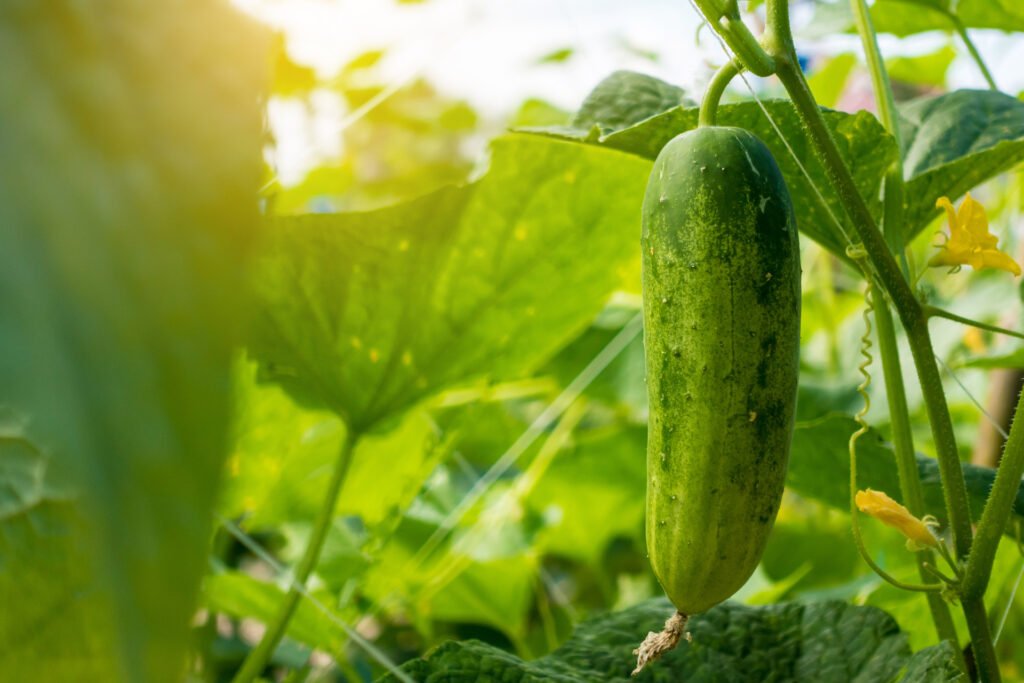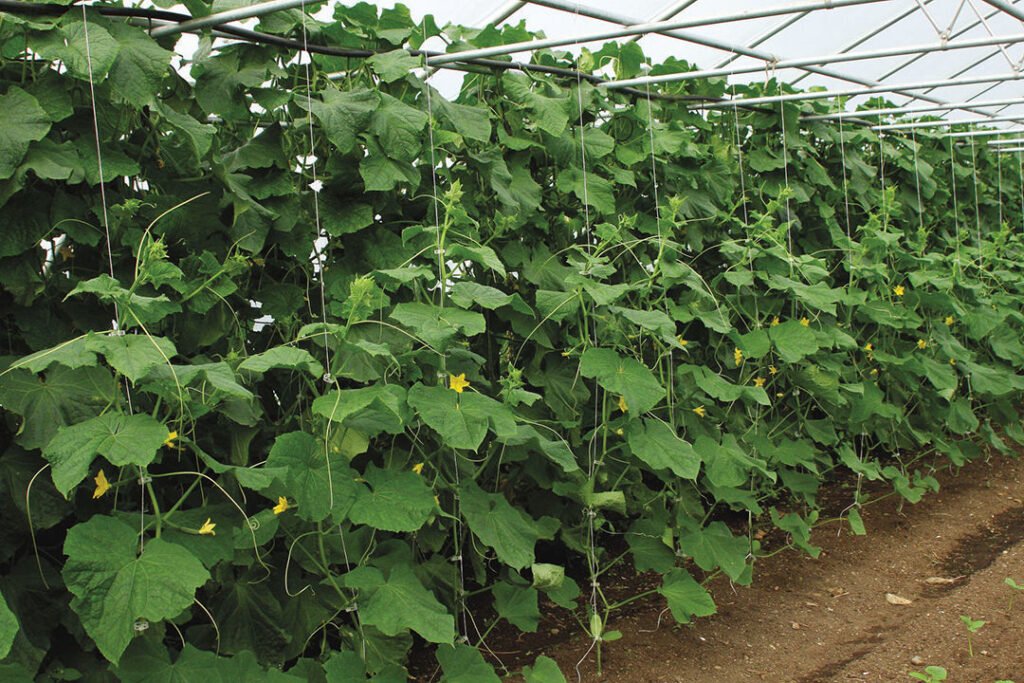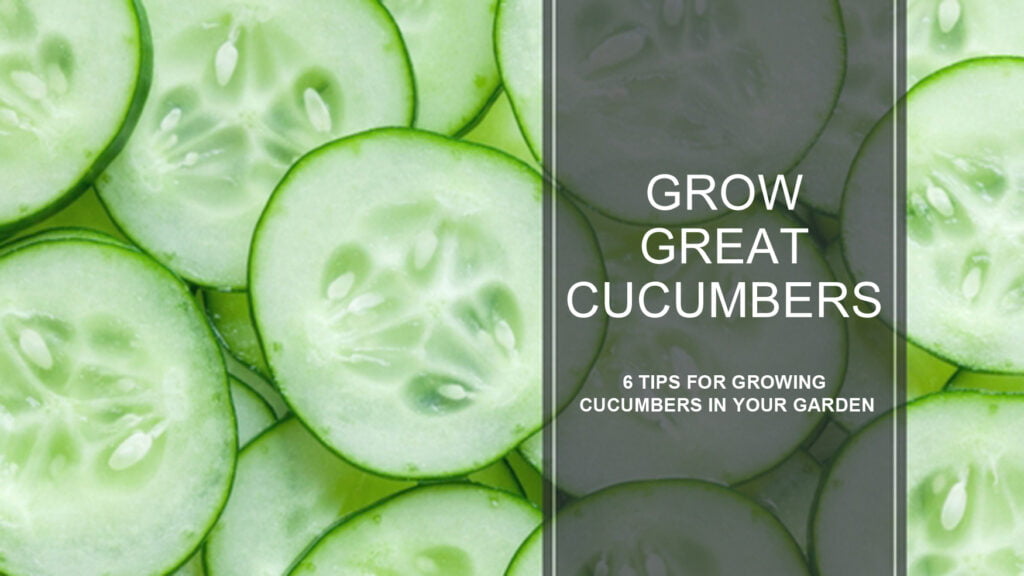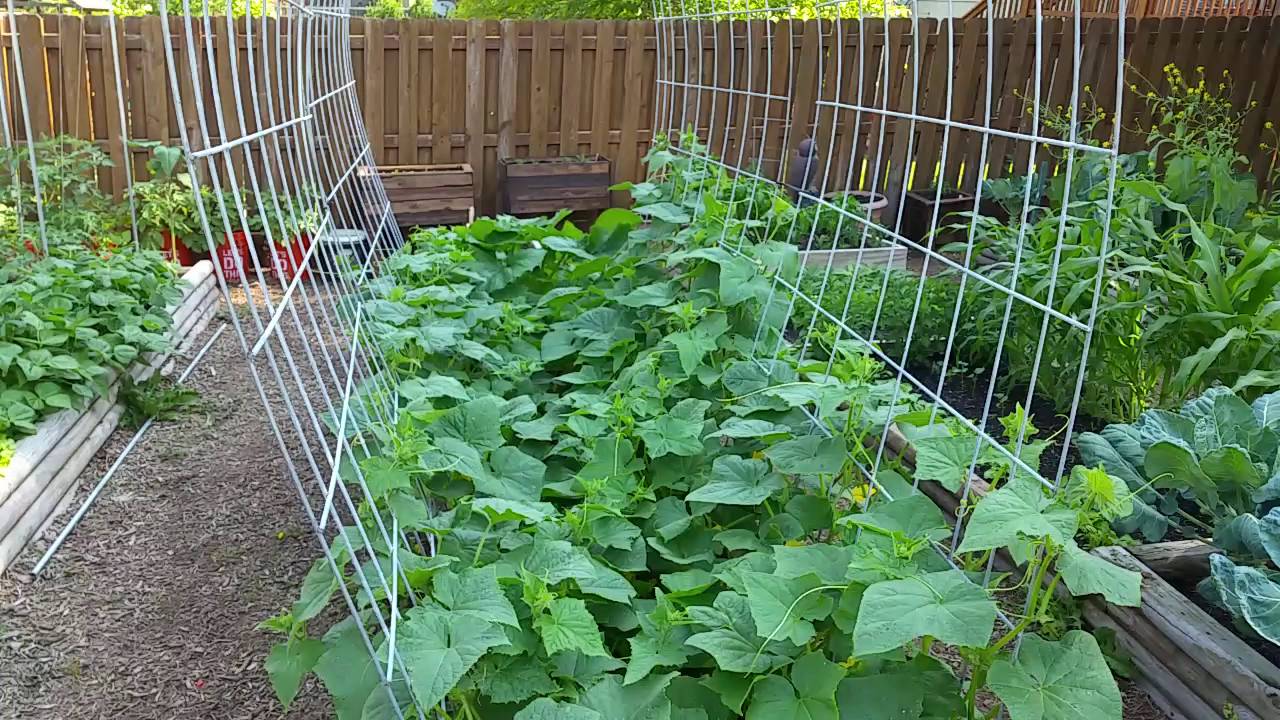So, you’re eager to grow your own cucumbers in the rugged terrain of Colorado, huh? Well, you’re in luck because we’ve got just the tips you need to make your green dreams come true. With its dry climate and high elevation, Colorado can present some unique challenges for gardeners, but fear not! In this article, we’ll walk you through everything you need to know about successfully growing cucumbers in the Centennial State. From selecting the right cucumber variety to planning your planting schedule and providing the ideal growing conditions, we’ve got you covered. So, grab your gardening gloves and get ready to transform your backyard into a cucumber haven!

Choose the Right Variety
When it comes to growing cucumbers in Colorado, one of the first things you need to consider is choosing the right variety. With the state’s unique climate and growing conditions, not all cucumber varieties will thrive. You’ll want to select varieties that are well-suited for Colorado’s growing season and that are disease-resistant.
Evaluate Growing Seasons
Colorado has a short growing season with cool nights and occasional frost, so it’s important to choose cucumber varieties that have a shorter maturity time. Look for varieties that can mature within 55-65 days to ensure a successful harvest.
Select Disease-Resistant Varieties
Another important factor to consider when choosing cucumber varieties in Colorado is their resistance to diseases common in the region. Diseases like cucumber mosaic virus and powdery mildew can greatly affect the health and productivity of your cucumber plants. Look for varieties that have high resistance to these common diseases to minimize the risk of crop loss.
Consider Space and Container Restrictions
If you have limited space or are growing cucumbers in containers, be sure to choose compact cucumber varieties or those specifically bred for container gardening. These varieties have a more compact growth habit and are better suited for smaller spaces or containers. Keep in mind the vertical space as well, as some cucumber varieties are known for their vigorous climbing vines that may require trellises or cages for support if space is a concern.
Start Indoors
To give your cucumber plants a head start and extend the growing season in Colorado, it’s recommended to start them indoors. This allows you to sow the seeds early and transplant the seedlings outdoors when the weather is more favorable.
Sow Seeds in Peat Pots
When starting cucumbers indoors, it’s best to use peat pots or biodegradable seedling pots. These pots can be planted directly into the ground, minimizing root disturbance during transplantation. Fill the pots with a high-quality seed starting mix and plant one or two cucumber seeds per pot.
Provide Optimal Germination Conditions
Cucumber seeds require warm soil for germination. You can use a heat mat underneath the peat pots or place them in a warm location, such as near a heating vent or on top of the refrigerator. Maintain a temperature of around 70-80°F (21-27°C) to help the seeds germinate faster. It’s also important to keep the soil consistently moist but not waterlogged during the germination process.
Transplant Seedlings Outdoors
Once the danger of frost has passed and the soil temperature has warmed up, usually around late spring or early summer in Colorado, it’s time to transplant your cucumber seedlings outdoors. Harden off the seedlings by gradually exposing them to outdoor conditions. Choose a location that receives full sunlight for at least six to eight hours a day.

Prepare the Soil
Preparing the soil is crucial for the success of your cucumber plants. In Colorado, where the soil tends to be nutrient-poor and heavy, taking the time to improve soil quality and optimize pH levels is essential.
Choose a Well-Draining Location
Cucumbers thrive in well-drained soil, as excessive moisture can lead to root rot and other fungal diseases. Before planting, select a location in your garden that has good drainage. If you have heavy clay soil, consider creating raised beds or using containers to improve drainage.
Improve Soil Quality with Organic Matter
To enrich the soil and improve its nutrient content, it’s recommended to incorporate organic matter, such as compost or well-rotted manure, into the soil before planting cucumbers. Organic matter not only adds nutrients but also improves soil structure, helping with drainage and aeration. Spread a layer of organic matter over the planting area and mix it thoroughly into the top few inches of soil.
Optimize pH Levels
Cucumbers prefer a slightly acidic to neutral soil pH between 6.0 and 7.0. In Colorado, where the soil tends to be alkaline, it may be necessary to lower the pH by adding sulfur or other acidic amendments. Test the soil pH before planting and make any necessary adjustments according to the requirements of cucumber plants. This will ensure that the plants can effectively absorb necessary nutrients from the soil.
Provide Adequate Watering
Proper watering is crucial for growing healthy cucumber plants. While cucumbers require consistent moisture, it’s important to find the right balance and avoid overwatering or waterlogging the soil. Consider using drip irrigation for efficient and targeted watering.
Water Consistently and Thoroughly
Cucumbers need consistent moisture to thrive, especially during flowering and fruiting stages. Water the plants deeply once or twice a week, providing enough water to penetrate at least 6 inches into the soil. This encourages deep root growth and helps the plants withstand drought conditions.
Avoid Overwatering and Waterlogging
Overwatering can lead to root rot and other fungal diseases. It’s important to avoid saturating the soil and allowing excess water to accumulate. To prevent overwatering, ensure that the soil has adequate drainage, and always check the moisture level before watering again. Let the top inch of soil dry out slightly before watering, as cucumbers prefer slightly drier conditions over saturated soil.
Consider Drip Irrigation
Drip irrigation is an excellent option for watering cucumbers efficiently and conserving water. This irrigation system delivers water directly to the plant’s root zone, minimizing water loss through evaporation and ensuring that the soil stays evenly moist. Drip irrigation also reduces the risk of fungal diseases, as it doesn’t wet the foliage like overhead watering does.

Implement Proper Fertilization
To promote vigorous growth and a bountiful harvest, it’s important to provide cucumbers with proper fertilization. Organic fertilizers, along with compost or mulch, can greatly enhance soil fertility and nutrient retention. Avoid nitrogen deficiencies by incorporating well-balanced fertilizers.
Apply Organic Fertilizers
Organic fertilizers, such as well-rotted compost, worm castings, or composted manure, are excellent choices for feeding cucumber plants. These organic amendments not only provide valuable nutrients but also improve soil structure and microbial activity. Apply the organic fertilizers to the soil before planting and side-dress the plants with compost during the growing season to continually supply nutrients.
Prevent Nitrogen Deficiencies
Nitrogen is essential for the growth and development of cucumber plants. Lack of nitrogen can result in stunted growth, yellowing leaves, and poor fruit production. To prevent nitrogen deficiencies, use organic fertilizers that have a balanced nutrient profile or incorporate a slow-release nitrogen fertilizer into the soil before planting. Regularly monitor the plants for any signs of nutrient deficiencies and adjust the fertilization accordingly.
Use Compost or Mulch for Nutrient Retention
To retain soil moisture and prolong the availability of nutrients, consider using compost or organic mulch around your cucumber plants. Compost can be applied as a top dressing around the base of the plants, while organic mulch, such as straw or wood chips, can be spread throughout the planting area. These organic materials act as a natural slow-release fertilizer, breaking down over time and enriching the soil with nutrients.
Practice Trellising and Support
Cucumbers are known for their vining growth habit, which makes them ideal candidates for trellising and support. By trellising your cucumber plants, you can maximize space, improve airflow, and facilitate easy harvest and pest management.
Install Trellises or Cages
Before planting your cucumbers, install trellises or cages in the garden to provide vertical support for the growing vines. Trellises can be made of wood, wire mesh, or even string, as long as they are sturdy enough to support the weight of the vines and fruit. Install them at least 6 to 8 feet in height to accommodate the vigorous growth of the cucumber vines.
Train Cucumber Vines
As your cucumber plants grow, gently train the vines to grow vertically along the trellis or cage. This can be done by gently tying the vines to the support structure with twine or using clips. Training the vines vertically not only saves space but also improves air circulation, reduces disease incidence, and makes it easier to harvest the cucumbers.
Manage Weeds and Pest Control
Trellising cucumber plants also helps with weed management. By lifting the vines off the ground, trellises reduce weed competition and make it easier to spot and remove unwanted plants. Trellising also facilitates better pest control by allowing more exposure to sunlight and improving accessibility for pest management measures.

Monitor and Control Pests
Growing cucumbers in Colorado can come with its fair share of pest challenges. It’s important to monitor your plants regularly and implement proper pest control methods to prevent damage and ensure a healthy crop.
Identify Common Pests in Colorado
Some common pests that you may encounter when growing cucumbers in Colorado include cucumber beetles, aphids, spider mites, and squash bugs. Keep a close eye on your plants for any signs of pest activity, such as chewed leaves, wilting, or stunted growth. This will help you identify the specific pests present and determine the most appropriate control methods.
Implement Natural Pest Control Methods
When dealing with pests in your cucumber garden, it’s best to prioritize natural and organic pest control methods. Biological controls, such as ladybugs and praying mantises, can help control aphid and mite populations. Additionally, you can introduce beneficial nematodes into the soil to combat soil-borne pests like cucumber beetles. Manual controls, like handpicking pests or using insecticidal soaps, can also be effective.
Utilize Organic Pest Control Products
If infestations become severe and natural pest control methods are not effectively managing the problem, you may consider using organic pest control products as a last resort. Look for products that are specifically labeled for use on cucumbers and follow the instructions carefully to ensure the safety of your plants, yourself, and the environment. Always remember to minimize chemical use and prioritize organic and sustainable practices.
Protect Cucumbers from Frost and Cold
Colorado’s fluctuating weather patterns can pose a risk to cucumber plants, especially during cold snaps and frost events that can occur well into spring and autumn. Taking steps to protect your cucumber plants can help ensure their survival and a successful harvest.
Monitor Local Weather
Stay vigilant and keep an eye on the local weather forecast, especially during critical times when frost or cold snaps are predicted. Knowing when these events are likely to occur allows you to take preemptive measures to protect your cucumber plants.
Cover Plants if Frost is Expected
When frost is expected, covering your cucumber plants with blankets, tarps, or row covers can help provide temporary protection. Ensure that the covers extend all the way to the ground and are secured to prevent cold air from reaching the plants. Remove the covers once the temperature rises above freezing to avoid suffocating the plants.
Keep Cucumbers Warm during Cold Snaps
During cold snaps, cold frames or miniature greenhouses can provide additional protection for your cucumber plants. These structures trap heat from the sun, creating a more favorable microclimate for the plants. Place them over the cucumber plants and open them during the day to allow for ventilation. This method can extend your growing season and protect your plants from extreme cold.

Harvesting Cucumbers
Knowing when and how to harvest cucumbers is essential to ensure the best taste and quality. Proper harvesting techniques also contribute to the plant’s overall health and productivity.
Recognize Optimal Harvest Times
Cucumber varieties have different optimal harvest times, so it’s important to familiarize yourself with the specific variety you’re growing. Most cucumbers are ready for harvest when they reach around 6 to 8 inches in length. Pickling cucumbers are typically harvested when they are smaller and more tender, while slicing cucumbers are left to mature slightly larger.
Use Pruning Shears or a Knife
To harvest your cucumbers, use pruning shears or a sharp knife to cut the stems rather than pulling or twisting the fruits off the vines. This helps prevent any damage to the plant and ensures a clean cut. Be careful not to injure the neighboring vines or stems while harvesting to avoid any potential spread of diseases.
Store Cucumbers Properly
After harvesting, cucumbers can be consumed immediately or stored for a short period of time. To keep cucumbers fresh, store them in the refrigerator in a plastic bag or an airtight container. Be sure to check them regularly for any signs of spoilage or decay and consume them promptly to enjoy their optimal taste and texture.
Notable Tips and Considerations
Here are some additional tips and considerations to keep in mind when growing cucumbers in Colorado:
Give Cucumbers Ample Sunlight
Cucumbers require at least six to eight hours of direct sunlight each day. Make sure to choose a sunny location in your garden or provide adequate light if you’re growing them indoors. Insufficient sunlight can result in weak growth and poor fruit set.
Practice Crop Rotation
To prevent the spread of diseases and maintain soil fertility, it’s important to practice crop rotation. Avoid planting cucumbers or other members of the cucurbit family (such as melons or squash) in the same area of the garden year after year. Instead, rotate your crops by planting them in a different location each season.
Watch for Signs of Disease or Infection
Regularly inspect your cucumber plants for any signs of disease or infection. Common cucumber diseases in Colorado include powdery mildew and bacterial wilt. Take prompt action if you notice any signs of disease, such as yellowing leaves, white powdery patches, or wilting. Remove and dispose of infected plants to prevent the spread of diseases to healthy plants.
By following these tips and considerations, you can successfully grow cucumbers in Colorado and enjoy a bountiful harvest of delicious, homegrown cucumbers. With careful planning, proper care, and a little bit of gardening know-how, you’ll be on your way to cultivating healthy cucumber plants and enjoying the fruits of your labor. Happy cucumber growing!



